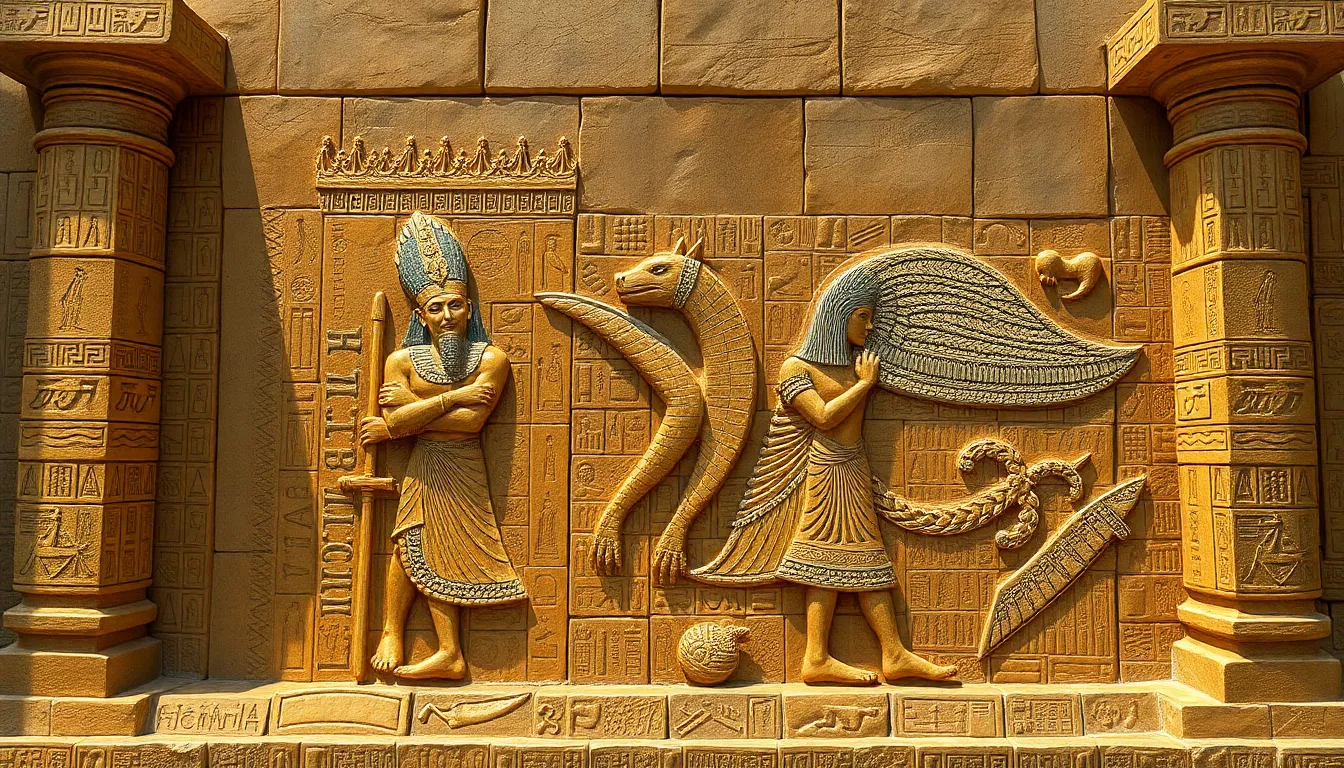Mythical Inspirations: How Ancient Egypt Influenced Art Through the Ages
I. Introduction
Ancient Egypt, with its rich cultural heritage, has left an indelible mark on the world of art and mythology. From the grand pyramids that touch the sky to the intricate hieroglyphs that tell stories of gods and pharaohs, the artistic expressions of this civilization are both profound and enduring. At the heart of Egyptian art is mythology, which served not only as a source of inspiration but also as a framework for understanding the world.
The purpose of this article is to explore the enduring influence of Egyptian art through time, examining how its mythical inspirations have shaped artistic expression across various cultures and epochs.
II. The Foundations of Egyptian Art
Ancient Egyptian art is characterized by several key features that distinguish it from other artistic traditions:
- Symbolism: Every artwork was imbued with meaning, often related to mythology, religion, and the afterlife.
- Flat Perspective: Artists used a composite view where figures were shown in profile, but with torsos depicted frontally.
- Hierarchical Scale: Important figures, such as gods or pharaohs, were depicted larger than lesser figures to signify their importance.
The role of mythology in shaping artistic expression cannot be overstated. Egyptian artists were not merely creators but storytellers who conveyed the beliefs and values of their society through their works. Iconography played a crucial role, with specific symbols representing various deities, concepts, and the afterlife.
Common symbols included:
- Ankh: The symbol of life.
- Eye of Horus: Representing protection and royal power.
- Scarab: A symbol of rebirth and regeneration.
III. The Influence of Egyptian Art in Classical Antiquity
The artistic legacy of Ancient Egypt significantly influenced the cultures of classical antiquity, particularly the Greeks and Romans. Artists in these civilizations adopted Egyptian motifs, integrating them into their own works.
Examples of this influence can be observed in:
- Sculptures: Greek sculptures often took inspiration from the rigid postures and idealized forms of Egyptian statues.
- Architecture: The use of columns and monumental buildings in Roman architecture was inspired by Egyptian temple designs.
Additionally, Egyptian mythology permeated classical literature and art, with figures such as Isis and Osiris being referenced and reinterpreted in various works, highlighting the shared cultural fascination with these ancient themes.
IV. The Renaissance Revival of Egyptian Aesthetics
The Renaissance marked a period of renewed interest in the art and culture of Ancient Egypt. Scholars, artists, and explorers began to unearth and study ancient artifacts, leading to a revival of Egyptian aesthetics in Europe.
During this time, Egyptian motifs began to appear in Renaissance paintings and sculptures, as artists sought to incorporate the mystique of the ancient world into their works. Notable artists influenced by Egyptian themes include:
- Leonardo da Vinci: His studies of anatomy and proportion drew inspiration from the stylized forms of Egyptian art.
- Raphael: Incorporated Egyptian elements into his works, reflecting the fascination with ancient cultures.
V. The Role of Egyptomania in the 19th Century
The 19th century saw a surge of fascination with Ancient Egypt, often referred to as Egyptomania. This phenomenon was fueled by archaeological discoveries, including the opening of the tomb of Tutankhamun and the Rosetta Stone, which provided insights into Egyptian culture and language.
During this period, Egyptian influences permeated various aspects of art, fashion, and architecture:
- Art: Artists like Jean-Léon Gérôme created works that celebrated Egyptian themes, blending realism with myth.
- Fashion: Egyptian motifs became popular in clothing and jewelry, reflecting the exoticism of the culture.
- Architecture: Structures like the Egyptian Revival style buildings showcased the fascination with ancient design.
Key exhibitions, such as the 1867 Exposition Universelle in Paris, further showcased Egyptian themes, inspiring a generation of artists and designers.
VI. The Modern Interpretation of Egyptian Art
In contemporary times, many artists continue to draw inspiration from Ancient Egyptian culture, applying traditional motifs to modern styles. The fusion of these elements creates a dynamic dialogue between past and present, exploring themes of identity and cultural heritage.
Contemporary artists inspired by Ancient Egyptian themes include:
- Kara Walker: Known for her silhouette installations that reflect on race and history, she incorporates Egyptian motifs to challenge perceptions.
- Yinka Shonibare: His works often reference colonialism and identity, using Egyptian imagery to evoke historical narratives.
The significance of Egyptian art in today’s global art scene lies in its ability to transcend time, continuing to inspire and provoke thought across cultures.
VII. The Legacy of Egyptian Mythology in Global Art
The influence of Egyptian mythology extends beyond the borders of Egypt, impacting cultures worldwide. Elements of Egyptian themes can be found across various artistic movements, including:
- Art Nouveau: Artists embraced Egyptian motifs in decorative arts and architecture.
- Surrealism: The dreamlike quality of Egyptian mythology resonated with surrealist artists, leading to innovative interpretations.
Museums and exhibitions play a crucial role in preserving Egyptian artistic heritage, providing spaces for exploration and education. Major institutions like the British Museum and the Louvre continually showcase Egyptian artifacts, contributing to the understanding of this rich cultural legacy.
VIII. Conclusion
In conclusion, the enduring impact of Ancient Egypt on art through the ages is a testament to the power of mythology and cultural exchange. From its foundational characteristics to its influence on classical antiquity, the Renaissance, and modern interpretations, Egyptian art continues to inspire artists and art lovers alike.
Studying cultural influences in art history is essential for appreciating the interconnectedness of human expression. As we look to the future, ongoing research and appreciation of Egyptian art and mythology will ensure that this rich heritage continues to resonate across time and cultures.




